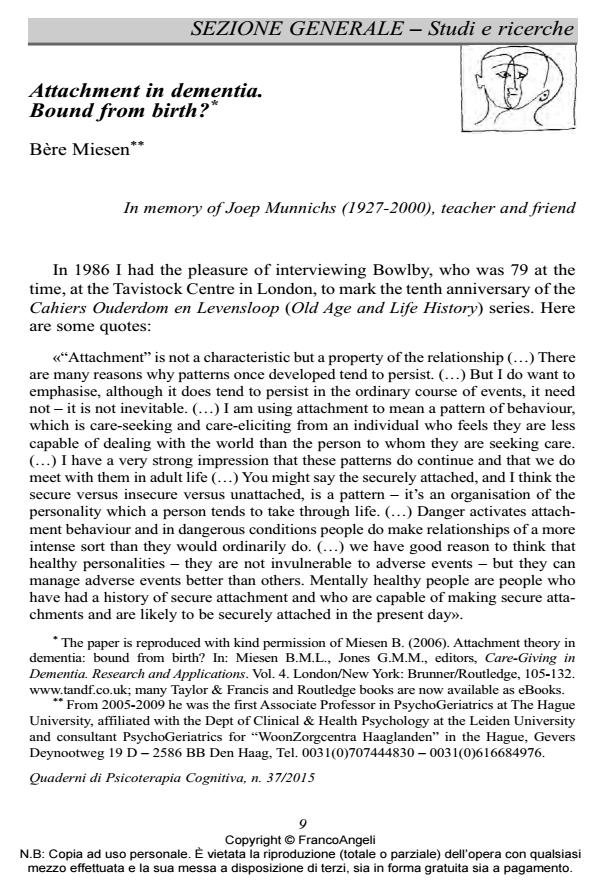Attachment in dementia. Bound from birth?
Journal title QUADERNI DI PSICOTERAPIA COGNITIVA
Author/s Bère Miesen
Publishing Year 2015 Issue 2015/37
Language English Pages 36 P. 9-44 File size 208 KB
DOI 10.3280/QPC2015-037002
DOI is like a bar code for intellectual property: to have more infomation
click here
Below, you can see the article first page
If you want to buy this article in PDF format, you can do it, following the instructions to buy download credits

FrancoAngeli is member of Publishers International Linking Association, Inc (PILA), a not-for-profit association which run the CrossRef service enabling links to and from online scholarly content.
Dopo aver brevemente presentato la Teoria dell’Attaccamento, l’Autore illustra la ricchezza della sua applicazione in svariati ambiti clinici. I concetti di "comportamento di attaccamento" e di "storia dell’attaccamento" sembrano assumere, in questo contesto, un ampio valore esplicativo. La Teoria dell’Attaccamento di Bowlby è considerata, già da tempo, da molti ricercatori e clinici come un concetto fondante al quale fare riferimento per meglio comprendere la varietà dei comportamenti delle persone affette da demenza, dei loro familiari e dei professionisti della cura. L’ipotesi formulata suggerisce che le persone affette da demenza vivano in un mondo percepito come altamente traumatico, come conseguenza della loro crescente inabilità a riconoscere o attribuire un senso all’ambiente fisico ed al contesto sociale circostanti. Il concetto di "spazio di consapevolezza" é cruciale al fine di comprendere tale prospettiva del trauma. L’Autore evidenzia le modalità nelle quali la "strange situation", adattata al mondo degli anziani affetti da demenza, può fornire una chiave di lettura, in termini di attaccamento, circa i disturbi del comportamento, concepiti come l’espressione di bisogni di vicinanza e protezione.
Keywords: Dementia, attachement, strange situation, trauma, caregivers.
Bère Miesen, Attachment in dementia. Bound from birth? in "QUADERNI DI PSICOTERAPIA COGNITIVA" 37/2015, pp 9-44, DOI: 10.3280/QPC2015-037002